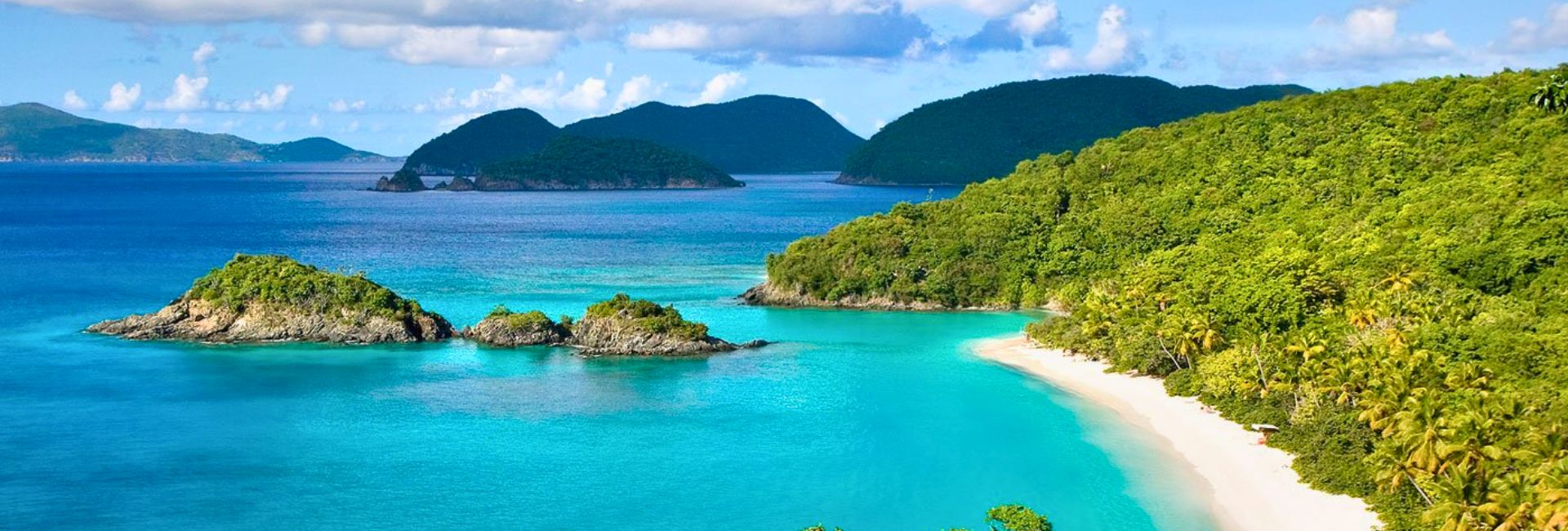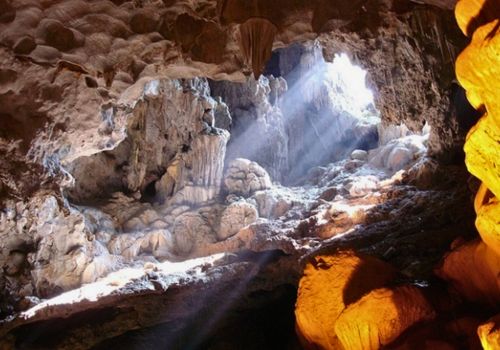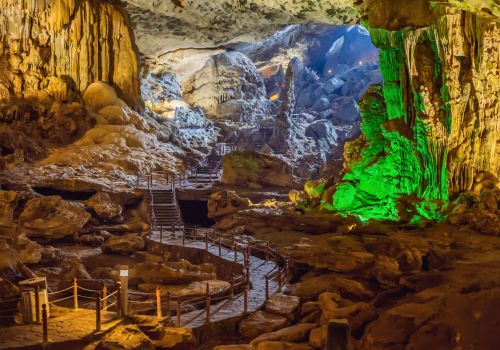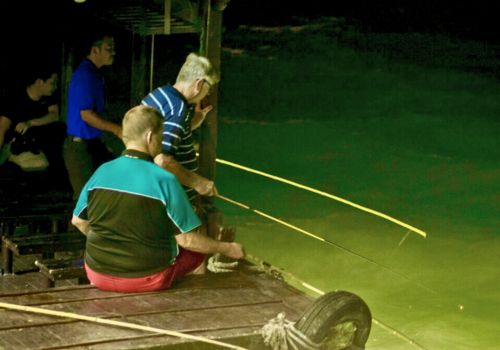Bai Tu Long National Park is one of Vietnam’s hidden gems, offering breathtaking scenery, diverse ecosystems, and countless outdoor activities. Whether you’re a nature lover, an adventurer, or someone looking for a peaceful escape, this guide will give you all the information you need to plan your visit to Bai Tu Long National Park.
Overview of Bai Tu Long National Park
- Location: Quang Ninh Province, northeastern Vietnam
- Total Area: 157.83 square kilometers
- ASEAN Heritage Park Status: Recognized on September 30, 2016
Known for its rich biodiversity, the park is home to over 170 aquatic plant species, 100 coral species, 110 fish species, and 130 vertebrate species. Birdwatchers will be delighted to spot species like black hawks, fire warblers, and Hainan flycatchers, while marine enthusiasts can find green sea turtles and a variety of coral reefs.
The park is also a cultural hub, with local fishing communities practicing traditional fish farming and other coastal activities. Its unique landscapes include mangrove ecosystems, limestone karsts, caves, and valleys, making it a must-visit for anyone passionate about nature and culture.
The park is divided into several habitats, such as mountainous regions, limestone karsts, and mangrove ecosystems, which create stunning natural landscapes. One of its most notable features is Ba Mun Island, a pristine sanctuary for rare flora and fauna.
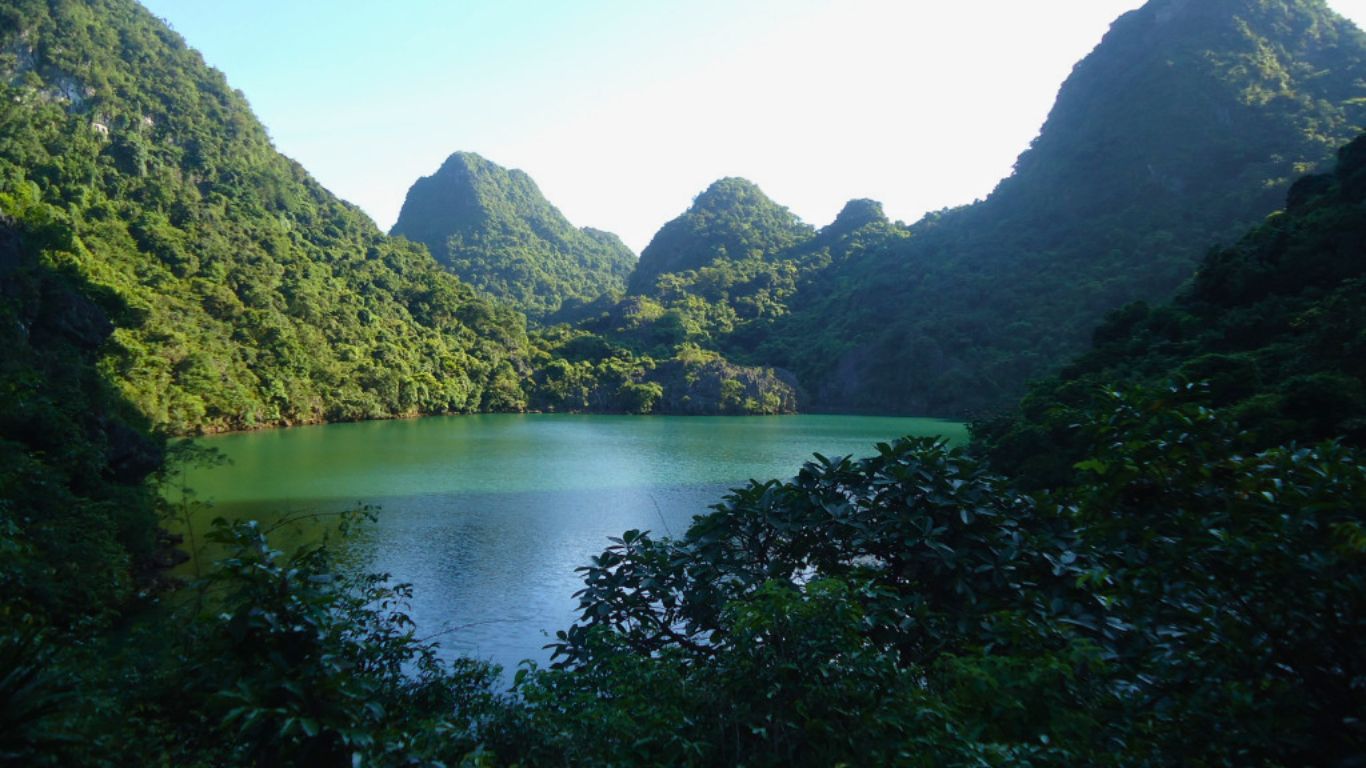
Is it worth visiting Bai Tu Long National Park?
Absolutely! Bai Tu Long National Park offers visitors a rare opportunity to experience untouched nature, abundant wildlife, and local culture. It’s less crowded than nearby Ha Long Bay, giving you a more serene experience.
What You Can Expect at Bai Tu Long National Park:
- Stunning limestone karsts and caves
- Rich biodiversity, including rare plants and animals
- Quiet, uncrowded beaches
- Opportunities for kayaking and hiking
- Insights into local fishing culture
When is the best time to visit Bai Tu Long National Park?
For the best experience, visit Bai Tu Long National Park in spring (February to May) or autumn (October to November).
- Spring (February to May): Flowers bloom, and the weather is warm but not too hot, perfect for exploring forests, streams, and beaches.
- Autumn (October to November): Cooler, dry weather makes it ideal for trekking and other outdoor activities. The scenery transforms with beautiful golden foliage.
- Avoid: July to September, as this period is prone to storms and high temperatures, which can disrupt travel plans.
Best things to do in Bai Tu Long National Park
Discover the diverse flora and fauna
Bai Tu Long National Park is home to an impressive variety of plant and animal life. Its ecosystems include mangroves, coral reefs, and tropical forests:
- 794 plant species
- 292 phytoplankton species
- 156 fish species
- 128 zooplankton species
- 66 bird species
- 54 mammal species
- 50 seaweed species
- 30 reptile species
- 24 mangrove species
- 5 amphibian species
- 2 seagrass species
This diversity makes it a paradise for nature enthusiasts and researchers alike.
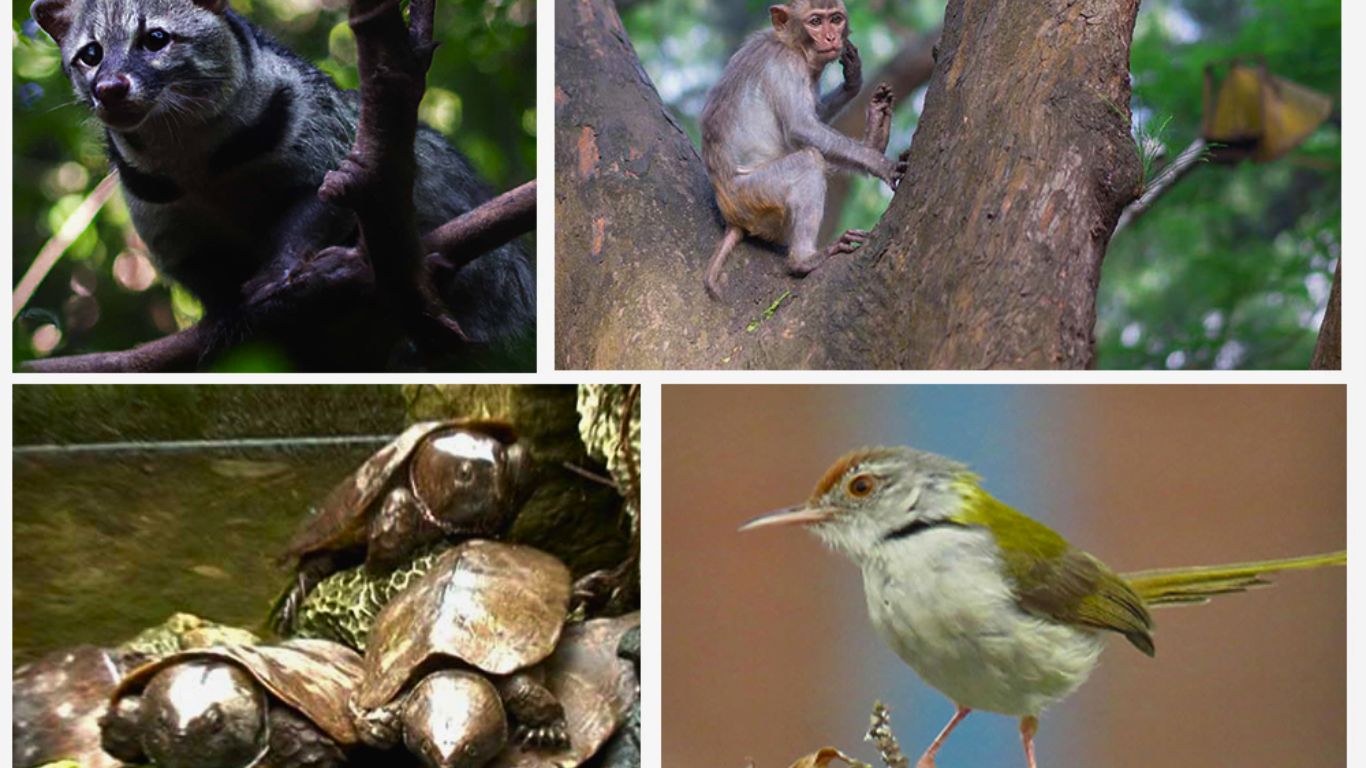
Visit Cai De Cave
Cai De Cave, one of the park’s most unique attractions, is a perfect spot for adventure seekers. The cave is accessible by small boats during low tide, allowing visitors to explore its fascinating interior. Inside, you’ll find stunning rock formations and hidden corners, making it a memorable part of your trip.
Explore Ba Mun Island
Ba Mun Island is the largest island in Bai Tu Long National Park, known for its lush forests and rare wildlife. Visitors can encounter unique plant species like red myrtle, lim trees, and endangered animals. Its dense forests offer an unforgettable hiking experience, showcasing Vietnam’s natural beauty.
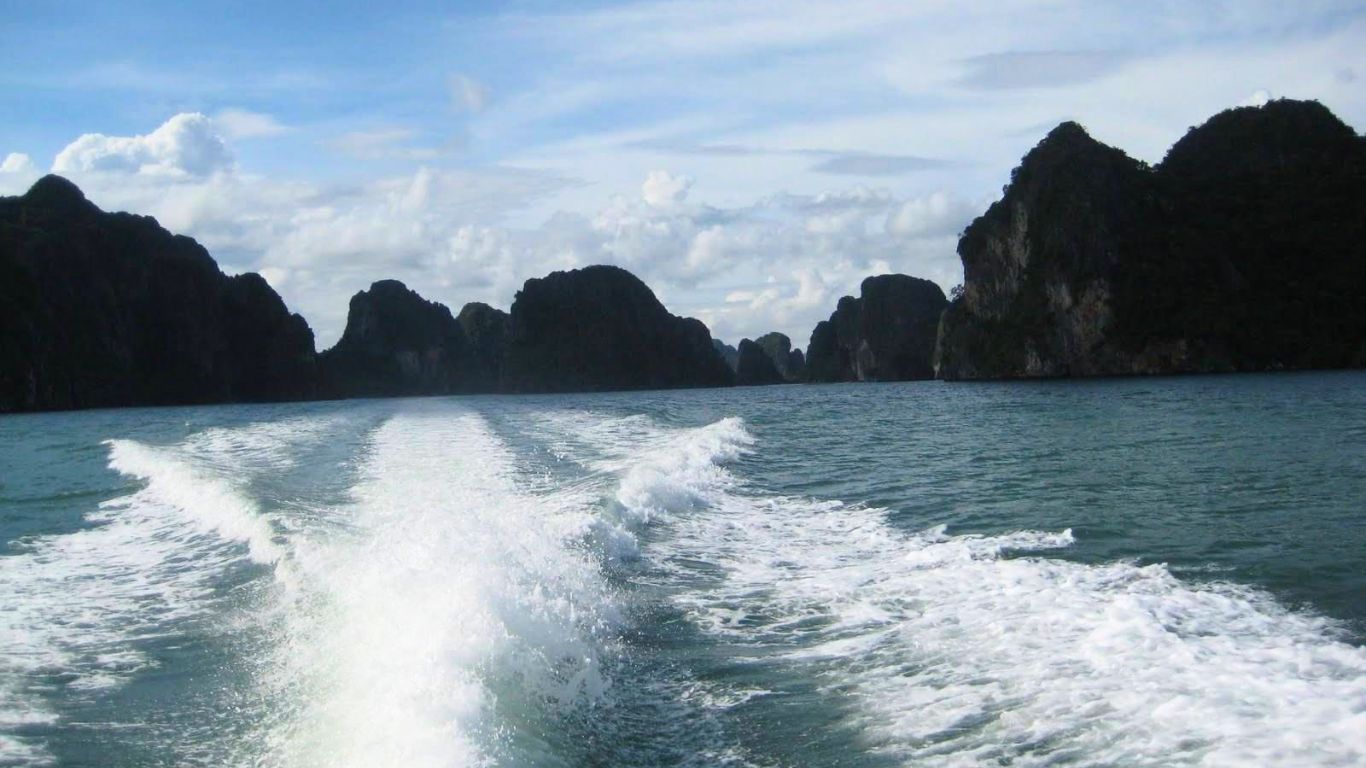
Discover Doi Cave (Bat Cave)
Doi Cave, located further inland, features incredible stalactites shaped by seawater and underground rivers. The cave is home to thousands of bats and other wildlife, including long-tailed monkeys, sambar deer, shrimp, and fish. It’s a great spot for both nature enthusiasts and photographers.
Explore Tra Ngo Lon Island
Tra Ngo Lon Island is the largest stone island in Bai Tu Long National Park. Its standout feature is Thien Nga Islet, a floating rock islet that creates a picturesque scene. Visitors can enjoy the tranquil surroundings and take in the natural beauty of the area.
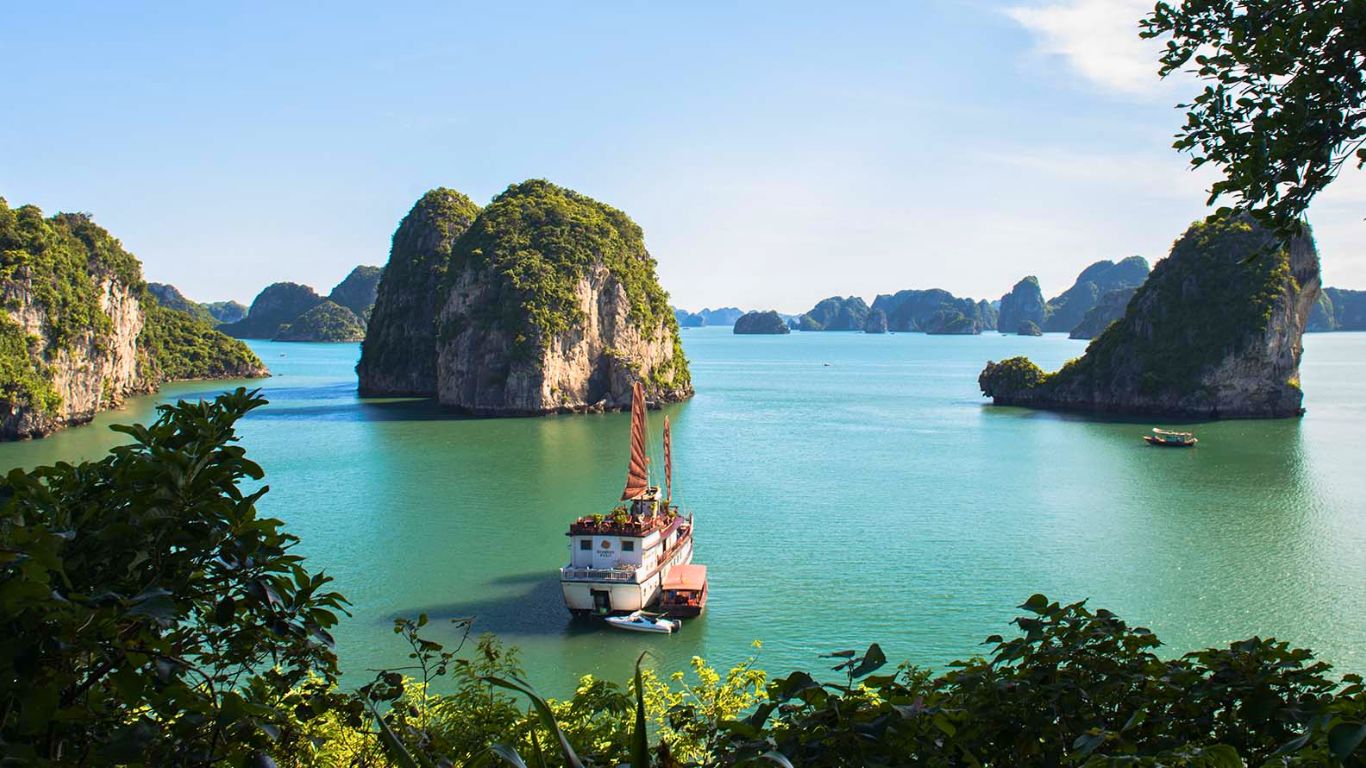
How to get to Bai Tu Long National Park?
Traveling to Van Don
- By Motorbike or Car: Take National Highway 18 from Hanoi through Bac Ninh and Hai Duong to Van Don District. This trip takes about 4 hours by motorbike and 3 hours by car. Once in Van Don, head to Ao Tien or Cai Rong Port to catch a boat to the park.
- By Public Transport: Take a bus or a Limousine van from Hanoi to Van Don. Limousine vans offer more comfort, while buses are budget-friendly.
- By Plane: Fly to Van Don Airport (Quang Ninh), Cat Bi Airport (Hai Phong), or Noi Bai Airport (Hanoi). From there, take a taxi or bus to the nearest port.
Moving from the port to the park
From Ao Tien or Cai Rong Port, take a speedboat to Bai Tu Long National Park. Boat tickets cost around 200,000 VND per person, and the journey takes about an hour.
Conservation in Bai Tu Long National Park
Protecting the unique ecosystems of Bai Tu Long National Park is a top priority for both local authorities and environmental organizations. Efforts to conserve the park’s flora and fauna include a combination of active patrolling, reforestation, education, and responsible tourism development.
The park’s management board works closely with rangers and part-time staff to monitor the forest and marine areas, reducing illegal poaching and the exploitation of natural resources. Educational programs for local communities and schools aim to raise awareness about the importance of preserving the park’s biodiversity. Environmental conservation has even been integrated into the school curriculum to instill sustainable values in younger generations.
Key conservation actions include:
- Forest Allocation: Thirteen hectares of forest have been entrusted to local households for care, with an additional 50 hectares reforested on Ba Mun Island.
- Wildlife Rehabilitation: More than 100 long-tailed monkeys rescued from illegal wildlife trade have been successfully released into the wild.
- Eco-Friendly Tourism: Tourism is carefully managed to balance economic benefits with environmental preservation. Visitors are encouraged to engage in activities that have minimal impact on the environment.
Tourism experts emphasize the need to attract investment in sustainable and eco-friendly tourist facilities, ensuring the park retains its natural beauty while offering memorable experiences to visitors. Unlike nearby Ha Long Bay, which faces heavy tourism pressure, Bai Tu Long National Park remains a pristine destination, showcasing untouched landscapes and extraordinary biodiversity.

Travel tips for Bai Tu Long National Park
To make the most of your trip to Bai Tu Long National Park, consider the following tips:
- Check the weather: Monitor the forecast before your trip to choose a day with clear skies, especially if you plan to hike or explore caves. Avoid visiting during the stormy season.
- Dress appropriately: Wear light, breathable clothing for hot days, and bring a swimsuit if you plan to enjoy the beaches. Pack sturdy sneakers or hiking shoes for exploring trails or rocky areas.
- Protect your essentials: Use waterproof bags to safeguard electronics like phones and cameras, as many activities involve water.
- Bring health and safety items: Pack sunscreen to avoid sunburn, insect repellent to prevent bites, and a raincoat or poncho in case of sudden rain. Consider motion sickness medicine for boat rides.
- Respect the wildlife: Keep a safe distance from animals and never feed them. This ensures their natural behavior remains undisturbed and protects both the animals and visitors.
- Follow eco-friendly practices: Dispose of waste properly and avoid littering. Carry any trash with you and leave no trace to help preserve the park’s pristine environment.
- Adhere to local guidelines: Respect restrictions on protected areas to help maintain the park’s delicate ecosystems.
- Stay hydrated and prepared: Bring plenty of water and snacks, as shops may not be easily accessible in remote areas.
- Hire a guide: A local guide can provide valuable insights into the park’s ecosystems, biodiversity, and hidden gems, ensuring you get the most out of your visit.
Bai Tu Long National Park is a true treasure of Vietnam, offering pristine landscapes, fascinating wildlife, and unforgettable experiences. Whether you’re hiking through dense forests, exploring mysterious caves, or simply relaxing on quiet beaches, this national park promises a unique adventure. Plan your visit now to discover one of Vietnam’s most beautiful and underrated destinations.
Mo Nguyen – From Halong Junk Cruise

